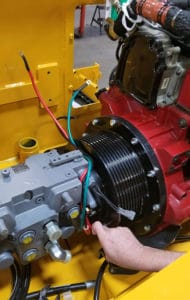Metrology Glossary: Alternating Current (AC)
What Is Alternating Current?
Alternating Current (AC) in electrical engineering and physics refers to an electrical current that cyclically changes direction within a circuit. This oscillation allows for efficient transmission of electricity over long distances and the seamless operation of various devices. AC power is the predominant form of electricity used in homes and industries, thanks to its ability to be easily transformed to different voltages and frequencies. The continuous reversal of direction enables efficient energy distribution and compatibility with devices that rely on periodic changes in current direction, making AC a fundamental cornerstone of modern electrical systems.
Why Is Alternating Current (AC) Important?
Alternating current (AC) plays a pivotal role across various domains. In power generation and transmission, AC’s efficiency is facilitated by transformers, allowing for effective long-distance energy transmission with minimal loss. AC generators are also used over DC generators for simpler and more efficient applications. In industry and manufacturing, AC powers electric motors driving machinery and plays a crucial role in welding, heating processes, and electromagnets for heavy material handling. Its influence extends to transportation, where AC motors propel electric vehicles, locomotives, and contribute to aircraft electrical systems. Additionally, AC finds application in medical equipment, scientific research experiments, and is integral to the generation and transmission of renewable energy from sources such as solar and wind power.
Related Terms
Further Reading







